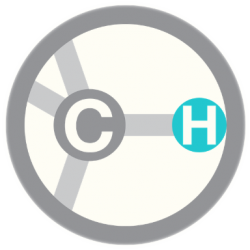Authors: Vishakantha Murthy, Thomas J. Martin, Susy Kim, Huw M. L. Davies and Steven R. Childers
J. Pharmacol. Exp. Therap.,
2008, 326, 2, 587-595
Previous studies have shown that the phenylisothiocyanate tropane analog 2-β-propanoyl-3-β-(2-naphthyl)-8-[4-isothiocyanato)benzyl]nortropane (HD-205) binds covalently to dopamine and serotonin transporters (DAT and SERT, respectively) in rat brain membranes (Biochem Pharmacol74:336–344, 2007). The present study evaluated the irreversible effects of HD-205 in vivo in rats after intracranial injection. Rats were implanted with unilateral cannulae in rat striatum, and HD-205 (0.001–3 nmol) was administered by intrastriatal injection. In vitro autoradiography of DAT binding with [125I]2-carbomethoxy-3-(4-iodophenyl)tropane (RTI-55) on brain sections obtained 24 h after injection showed a highly localized blockade of binding in striatum, with maximal blockade of binding by 1 to 3 nmol HD-205. Similar blockade of SERT binding (using [3H]-citalopram) was observed in the same area. No blockade of DAT or SERT binding was observed after intrastriatal injections of the reversible analog 2-β-propanoyl-3-β-(2-naphthyl)-8-benzyl nortropane (HD-206), and HD-205 treatment had no effect on D2- and μ-opioid-stimulated guanosine 5′-O-(3-[35S]thio)-triphosphate binding in sections from the same animals. In a time course study, rats administered with 1 nmol HD-205 showed recovery of 50% DAT binding after 3 to 4 days postinjection, and full recovery after 6 weeks. Rats implanted with bilateral cannulae were tested for cocaine-induced locomotor activity. Two days after intrastriatal injection of 1 nmol of HD-205, systemic (20 mg/kg i.p.) cocaine-induced locomotor activity was not affected; however, locomotor activity induced by intrastriatal administration of cocaine (6 nmol) was eliminated. This strategy of site-specific chemical blockade of transporters could serve as a valuable tool to evaluate the neuroanatomical basis of DAT-mediated cocaine effects.

